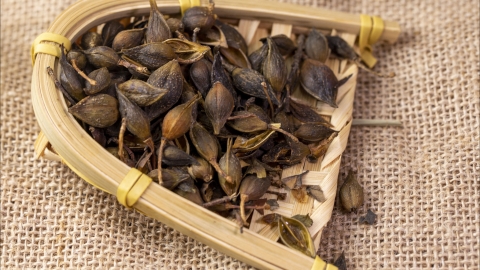What are the differences between Forsythia and Winter jasmine?
The differences between Forsythia (Lianqiao) and Winter jasmine (Yingchun) are generally reflected in their properties and taste, meridian tropism, functional emphasis, principal indications, methods and dosages of application, and compatibility uses. A detailed analysis is as follows:

1. Properties, Taste, and Meridian Tropism: Forsythia has a bitter taste and slightly cold nature, entering the Lung, Heart, and Small Intestine meridians. Winter jasmine is less commonly used clinically; its flower has a pungent and slightly bitter taste with a neutral nature, entering the Liver and Gallbladder meridians. There are clear differences in their properties, taste, and associated meridians.
2. Functional Emphasis: Forsythia primarily functions to clear heat, resolve toxins, reduce swelling, dissipate nodules, and疏散 wind-heat. It is particularly effective in clearing heart fire and heat pathogens in the upper jiao. Winter jasmine mainly clears heat and toxins while activating blood circulation and regulating menstruation, focusing more on promoting the flow of Qi and blood in the Liver meridian and alleviating conditions caused by blood stasis and stagnation.
3. Principal Indications: Forsythia is commonly used to treat disorders such as wind-heat invasion, initial stages of warm diseases, abscesses, carbuncles, scrofula, and phlegm nodules, making it a commonly prescribed herb for clearing heat and resolving toxicity. Winter jasmine is frequently used for treating fever with headache, sore throat, and irregular menstruation, indicating a relatively narrower range of applications.
4. Methods and Dosages of Application: Forsythia is typically administered by decoction internally, with a usual dosage of 6 to 15 grams. Externally, it can be applied as mashed herb poultice or used in washes with its decoction. Winter jasmine is mostly used in the form of its flower, usually decocted with a dosage of 3 to 9 grams. Externally, it can also be mashed and applied to affected areas or used in fumigation and washes as a decoction.
5. Compatibility Uses: Forsythia is often combined with Honeysuckle (Jinyinhua) to enhance its effects of clearing heat, resolving toxins, and疏散 wind-heat, commonly used for wind-heat type common colds. Winter jasmine is typically used together with Angelica (Danggui), Chuanxiong (Ligusticum wallichii), and similar herbs to achieve synergistic effects in promoting blood circulation and regulating menstruation, often applied to improve irregular menstruation and related conditions.
Distinguishing these two herbs should be based on their actual clinical applications. If medicinal use is required, selection should be made under the guidance of qualified medical professionals according to specific illnesses, avoiding self-medication to prevent adverse effects caused by inappropriate herb properties.




